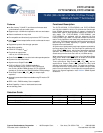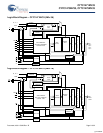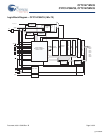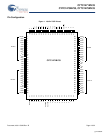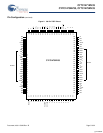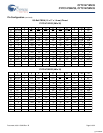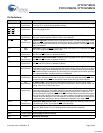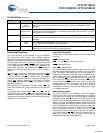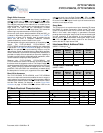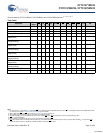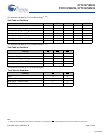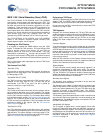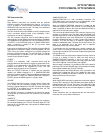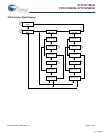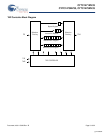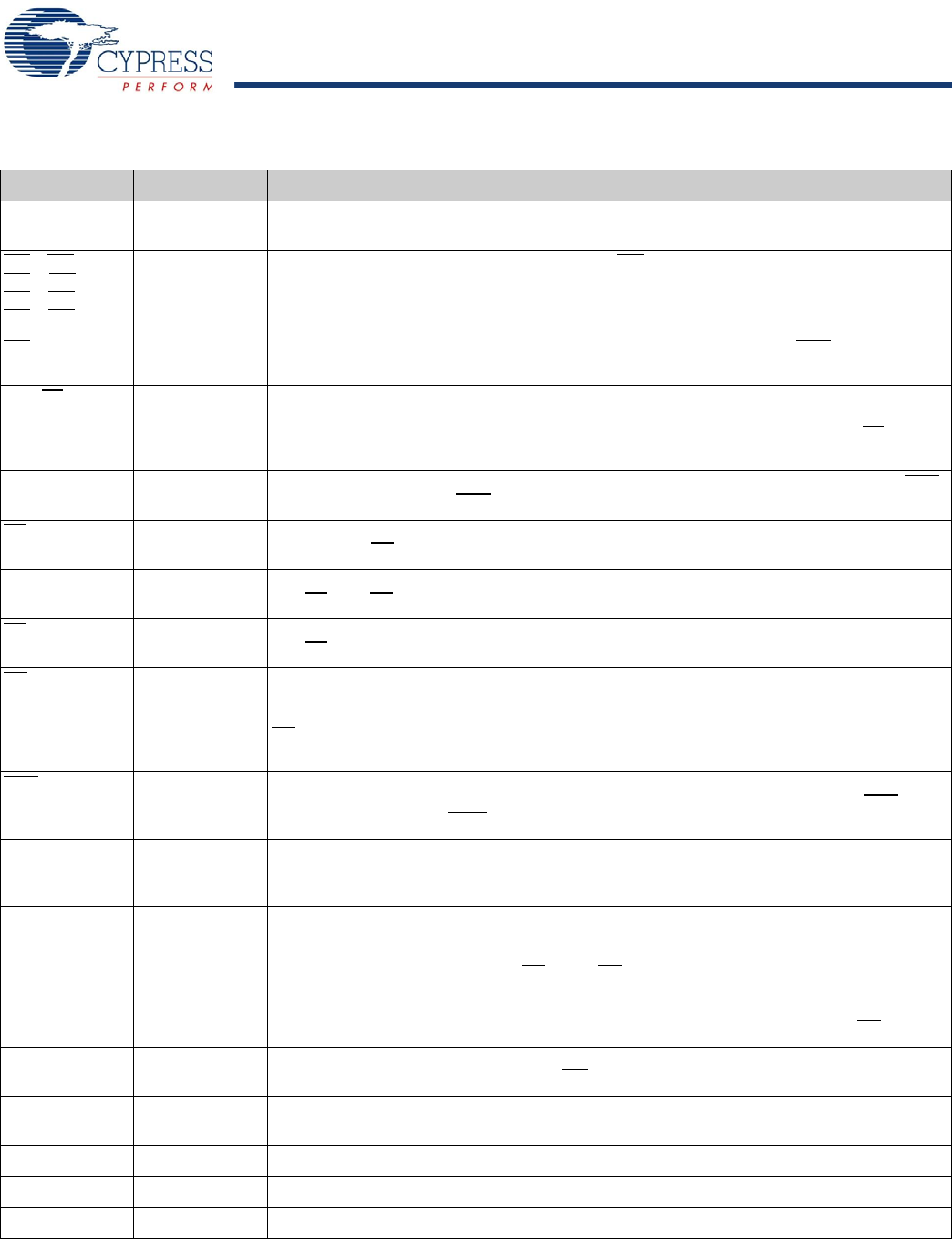
CY7C1471BV33
CY7C1473BV33, CY7C1475BV33
Document #: 001-15029 Rev. *B Page 8 of 32
Pin Definitions
Name IO Description
A
0
, A
1
, A Input-
Synchronous
Address Inputs used to select one of the Address Locations. Sampled at the rising edge
of the CLK. A
[1:0]
is fed to the two-bit burst counter.
BW
A
, BW
B
,
BW
C
, BW
D
,
BW
E
, BW
F
,
BW
G
, BW
H
Input-
Synchronous
Byte Write Inputs, Active LOW. Qualified with
WE to conduct writes to the SRAM. Sampled
on the rising edge of CLK.
WE
Input-
Synchronous
Write Enable Input, Active LOW. Sampled on the rising edge of CLK if CEN is active LOW.
This signal must be asserted LOW to initiate a write sequence.
ADV/LD Input-
Synchronous
Advance/Load Input. Advances the on-chip address counter or loads a new address. When
HIGH (and CEN
is asserted LOW) the internal burst counter is advanced. When LOW, a new
address can be loaded into the device for an access. After deselection, drive ADV/LD
LOW to
load a new address.
CLK Input-
Clock
Clock Input. Used to capture all synchronous inputs to the device. CLK is qualified with CEN.
CLK is only recognized if CEN
is active LOW.
CE
1
Input-
Synchronous
Chip Enable 1 Input, Active LOW. Sampled on the rising edge of CLK. Used in conjunction
with CE
2
and CE
3
to select or deselect the device.
CE
2
Input-
Synchronous
Chip Enable 2 Input, Active HIGH. Sampled on the rising edge of CLK. Used in conjunction
with CE
1
and CE
3
to select or deselect the device.
CE
3
Input-
Synchronous
Chip Enable 3 Input, Active LOW. Sampled on the rising edge of CLK. Used in conjunction
with CE
1
and
CE
2
to select or deselect the device.
OE
Input-
Asynchronous
Output Enable, Asynchronous Input, Active LOW. Combined with the synchronous logic
block inside the device to control the direction of the IO pins. When LOW, the IO pins are enabled
to behave as outputs. When deasserted HIGH, IO pins are tri-stated, and act as input data pins.
OE
is masked during the data portion of a write sequence, during the first clock when emerging
from a deselected state, and when the device is deselected.
CEN Input-
Synchronous
Clock Enable Input, Active LOW. When asserted LOW the clock signal is recognized by the
SRAM. When deasserted HIGH the clock signal is masked. Because deasserting CEN
does
not deselect the device, CEN
can be used to extend the previous cycle when required.
ZZ Input-
Asynchronous
ZZ “Sleep” Input. This active HIGH input places the device in a non-time critical “sleep”
condition with data integrity preserved. During normal operation, this pin must be LOW or left
floating. ZZ pin has an internal pull down.
DQ
s
IO-
Synchronous
Bidirectional Data IO Lines. As inputs, they feed into an on-chip data register that is triggered
by the rising edge of CLK. As outputs, they deliver the data contained in the memory location
specified by the addresses presented during the previous
clock rise of the
read cycle. The
direction of the pins is controlled by OE
. When OE is asserted LOW, the
pins behave as outputs.
When HIGH, DQ
s
and DQP
X
are placed in a tri-state condition.The outputs are automatically
tri-stated during the data portion of a write sequence, during the first clock when emerging from
a deselected state, and when the device is deselected, regardless of the state of OE.
DQP
X
IO-
Synchronous
Bidirectional Data Parity IO Lines. Functionally, these signals are identical to DQ
s
.
During
write sequences, DQP
X
is controlled by BW
X
correspondingly.
MODE Input Strap Pin Mode Input. Selects the Burst Order of the Device. When tied to Gnd selects linear burst
sequence. When tied to V
DD
or left floating selects interleaved burst sequence.
V
DD
Power Supply Power Supply Inputs to the Core of the Device.
V
DDQ
IO Power Supply Power Supply for the IO Circuitry.
V
SS
Ground Ground for the Device.
[+] Feedback



